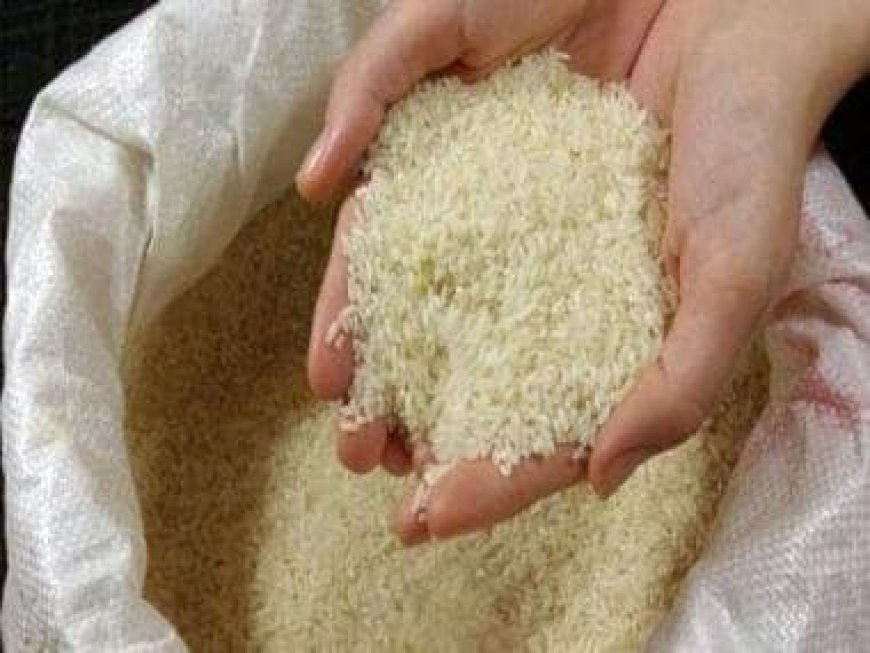Rush for Rice: Why NRIs in the US are panic-buying the kitchen staple
Rush for Rice: Why NRIs in the US are panic-buying the kitchen staple

We have all come across hoarders or have been guilty of hoarding in the past. Now, Non-Resident Indians (NRIs) in the United States and Canada have become hoarders and you shall be surprised at the item they are accumulating. Hundreds and hundreds of NRIs over the weekend were seen queuing in front of supermarkets over the weekend, trying to stock up on the staple – rice.
Several videos on social media showed Indians queuing up outside grocery stores in order to hoard rice packs, with some displaying them lugging shopping carts filled with rice bags.
We examine the reason for the rice frenzy among the NRIs.
Rice run
Over the past weekend, prominent grocery stores in major US cities including Texas, Michigan and New Jersey saw NRIs lining up to buy rice while others climbed shelves and pulled away heavy bags of rice. Videos also showed customers at the stores buying only multiple bags of rice.
#India has banned the export of rice to foreign countries.
NRI rising for rice in concern
#RiceExportsBan #RiceExports pic.twitter.com/jRFqh6uiAK
— Siraj Noorani (@sirajnoorani) July 22, 2023
Several US media reports stated that bags of rice flew off shelves across grocery stores, with the buyers being mostly Asians as it comprises a staple food for them.
The Business Line reported that several grocery stores across America had increased the price of rice bags, seeing the frenzy. The report quoted an NRI as saying that a bag of 9 kg of rice, which used to cost $15-16 (Rs 1,222-1309) earlier, was now being sold at $46.99 (Rs 3,846).
Ration shop dhaggara rice kosam queue lo unnattu undhi rice export ban anesariki pic.twitter.com/moVL845Nsc
— Certified Aawara (@BogeshwarRao) July 21, 2023
Other stores unable to keep up with the demand for rice were implementing rationing schemes or deploying innovative methods to stop the panic buying of rice. For instance, the owner of a store stocking Indian products in Mason town in Ohio enforced rationing by asking customers to restrict their purchase to one 20-pound bag (9.07 kg) of ordinary white rice per head, costing $24 (Rs 1,964).

And it seems that this price increase is further angering NRIs in the US. A frustrated customer, who was standing in queue on Sunday, was quoted by one of the local media outlets as saying, “What right do these grocery stores have to immediately double the price? They have not incurred any additional costs to import these rice bags, as they already had them in stock.”
Also read: Onion is the New Gold: How a shortage is making the world cry
Another also chimed in, “Limiting one bag per person would make sense, but doubling the price of a daily necessity food item and imposing a minimum spend to buy a rice bag is simply atrocious.”
Reason behind the rice frenzy
But what exactly is driving this rice run? Many believe that NRIs grew anxious over the availability of the staple as India announced a ban on rice exports. In fact, it was on 20 July that the Food and Consumer Affairs Ministry banned the export of non-basmati white rice, with immediate effect, to stabilise the volatile retail prices in the country.
“In order to ensure adequate availability of non-basmati white rice in the Indian market and to allay the rise in prices in the domestic market, the government of India has amended the export policy”, the food ministry had said in a statement, as per Reuters.
The move was taken as rice production in the country has taken a hit owing to vagaries of weather such as heavy monsoon rains in rice-producing states in the north and deficit rainfall in other parts of the country.
It’s important to note here that parboiled rice and basmati rice are not included in the export ban.

America is one of India’s prominent rice markets; the US and Canada, imported 64,330 tonnes of non-basmati rice from India in 2022-23. Hence, one can understand the repercussions of India’s decision to ban rice exports in America.
As BV Krishna Rao, the president of the Rice Exporters Association, was quoted as telling Reuters, “India would disrupt the global rice market with far greater velocity than Ukraine did in the wheat market with Russia’s invasion.”
Seeing this, industry experts and traders' unions have suggested that the Indian government should consider categorising specialised rice varieties like Sona Masuri under a different Harmonized System Nomenclature (HSN) code, allowing their export.
Food inflation in the US
India’s non-basmati white rice export ban comes at a time when experts are concerned about food inflation across the world. Global food supplies have been hit by Russia’s war in Ukraine, which has driven up commodity and grain prices around the world. This has further been compounded by Russia’s decision to pull out of the Black Sea grain deal.
In the US, overall food prices rose 0.2 per cent in May from the prior month, an increase after remaining flat the two months before, reported the New York Times.
Also read: Do Americans not have enough money to pay for even groceries right away?
Food prices in the US have been rising over a prolonged period of time, almost two years now, as the costs of labour, transportation and raw materials have increased. This can be attributed to supply chain snarls and higher fuel prices.
Other factors, such as extreme droughts in the western United States, have also strained supply and pushed up food prices.
With inputs from agencies
What's Your Reaction?



























































